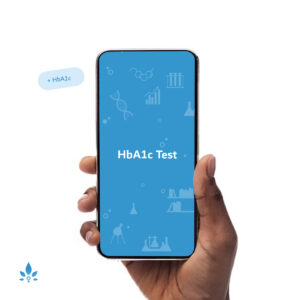The Diabetes Epidemic, and Why It Is Killing The Middle East


- The Diabetes epidemic currently affects 37 million people in The Middle East.
- Type 2 Diabetes, which is related to lifestyle factors, is prevalent across the MENA region.
- The impact of this Diabetes epidemic is huge, with over 350,000 diabetes related deaths each year.
- The ratio of Type 2 to Type 1 Diabetes sufferers is 10:1.
- Simple, sustainable changes to diet and lifestyle are key to overcoming the epidemic.
News sources, including the BBC, have reported a “disturbing” rise in the number of children and teenagers being treated for Type 2 Diabetes in the UK. Of those treated, three quarters were obese, with the youngest aged between five and nine. The early onset of Type 2 Diabetes is a trend that can be seen all over the world, and nowhere more so than in the Middle East
How Bad Is The Type 2 Diabetes Problem?
According to the World Health Organisation and IMF, diabetes currently affects 37 million people in the region, or 1 in 10 adults. It is the fifth largest killer in MENA after cardiovascular disease, stroke, pneumonia and road traffic accidents. Of these, at least two – cardiovascular disease and stroke – are secondary consequences of diabetes. Although Egypt, as the most populous state in the region, has the largest number of people with diabetes – 7.6 million in total – the epidemic is proportionately higher in the Gulf, affecting 24% of the population in Saudi Arabia, 23% in Kuwait and 19% in the UAE. This figure is set to double or even triple in some parts of the region, such as the UAE, by 2035.
The economic impact of this is huge. In 2014, there were 363,000 diabetes-related deaths, over half in under-60s. In ordinary circumstances, these citizens should have been part of a healthy working population. The annual spend on diabetes, which is already a whopping $16.8 billion, is set to increase to $24.7 billion by 2035 with the potential to bankrupt many healthcare systems.
But that is not the real tragedy. The real tragedy is that the ratio of Type 2 to Type 1 Diabetes sufferers is 10:1. Or to put it another way, that almost 10 in every 11 cases are preventable. At least 90% of the $500 billion spent every year on treating diabetes does not need to be spent on treating diabetes and could be spent instead on researching and treating less preventable diseases.
Solving The Diabetes Epidemic
So what can be done? Fortunately, the answer is simple, and it starts with a change of lifestyle and approach that focuses on sugar rather than calorie consumption.
Type 2 Diabetes can be understood as an intolerance to sugar, whereby the body is unable to remove excess sugar from the blood leading to high blood glucose levels. Over time, high blood glucose levels cause complications such as retinopathy, heart disease and stroke. When we eat sugar, whether it is natural, added or complex, it is converted by our bodies into glucose. Therefore, the key to controlling Type 2 Diabetes is to minimise the total sugar burden from all three of these sources.
To illustrate this point, consider two typical breakfast options. The first breakfast is one that is typically consumed in the UK – it contains bran flakes and skimmed fresh milk, a slice of wholegrain toast and a glass of apple juice. The second option is a three egg cheese and mushroom omelet and a full fat milk coffee.
Most health-conscious individuals would believe that the first breakfast with its wholegrains, fibre, fruit juice and low fat dairy is the healthier choice. However, when you consider the amount of sugar that is in each one, the results are quite surprising. The first breakfast contains 16.3 teaspoons of sugar and the second less than 1. Nutrition experts say that no more than 5% of daily calories should come from sugar – this equates to 7 teaspoons. So in fact, the first breakfast equals almost two whole days’ sugar allowance. With sugar hidden in the most seemingly healthy foods, it is hardly surprising then that even for a health-conscious individual, the sugar burden can quickly accumulate.
There have been a number of systematic reviews to evaluate the outcomes of a traditional calorie-restricted, low fat diet against a reduced carbohydrate approach. The outcome of these reviews indicates that on a low carb diet, people lose more weight and improve their cholesterol and systolic blood pressure. Moreover, there is a lower attrition rate for people in low carb groups indicating that if it was down to patient choice rather than public health guidelines to choose a treatment pathway, people would be more likely to maintain a low carb lifestyle than a calorie restricted one.
Finding A Solution to Diabetes
Diabetes.co.uk is the largest and most engaged diabetes community in the world. It provides a vital support network and discussion forum for nearly 10% of the diabetes population. Diabetes.co.uk has spent the past 3 years developing a series of evidence-based digital health interventions that have been proven to positively affect patient health outcomes.
The Low Carb Program is the world’s first completely accessible education program for people with Type 2 Diabetes. It focuses on simple, sustainable changes to diet that are grounded in a person’s goals, as well as their family, social and working lives. Over the course of ten weeks, the Low Carb Program guides users through a series of lessons, supported by a multi-platform app, videos, print-outs, practical action points and 24/7 online support.
The ultimate aim of the Low Carb Program is to reduce HbA1c, the 90-day average of blood glucose level, which is used as a marker of diabetes control. A 1% reduction in HbA1c reduces someone’s risk of amputation by 43%, cataracts by 16%, and heart failure by 19%.
The program has been a runaway success. To date, the combined weight loss of the 150,000 people who have participated in the Low Carb Program stands at 1.8 million kilograms or an average of 12kg per person. The HbA1c of people who complete the program has dropped so much that 35% can be technically classed as no longer having Type 2 Diabetes, while one in five are able to stop taking at least one diabetes related medication.
In Conclusion…
The message is simple: eating sugar, in whatever form, raises blood glucose levels and high blood glucose levels cause complications. By eating less added sugar and consuming more real food, not only can we stop the Type 2 Diabetes epidemic but we can actually reverse it.
Consider this: if the 33.6 million diabetes sufferers in MENA were put on the Low Carb Program tomorrow, by early 2018, 11.7 million of them could be in diabetes remission, saving the region billions per annum in medication alone.
Diabetes is killing the Middle East, but it needn’t be. It’s time for local governments to acknowledge what needs to be done; to invest proper time and money in evidence-based educational programs, and start fighting back.
___
If you are concerned you may have Diabetes, get tested in the privacy of your own home by ordering an HbA1c blood test here.
Nabta is reshaping women’s healthcare. We support women with their personal health journeys, from everyday wellbeing to the uniquely female experiences of fertility, pregnancy, and menopause. You can track your menstrual cycle and get personalised support by using the Nabta app.
Get in touch if you have any questions about this article or any aspect of women’s health. We’re here for you.












































